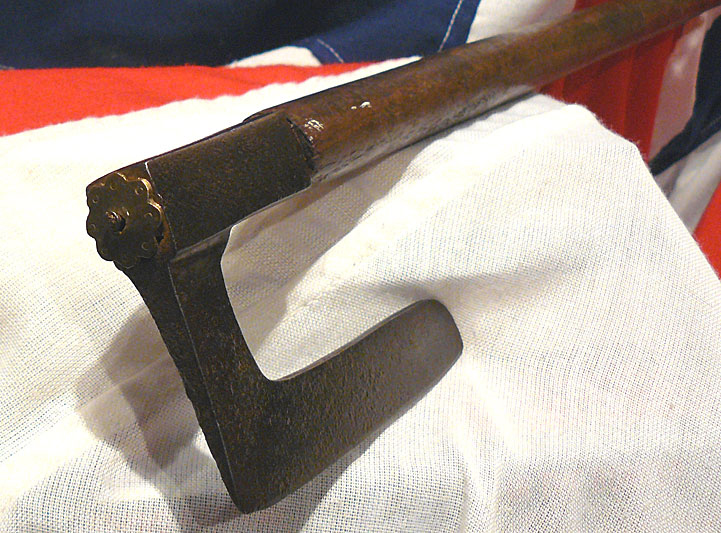A Most Scarce, And Highly Attractive In It’s Simplicity 17th Century Tanjore Battle Axe From The Era of Moghul Emperor Aurangzebe
From the era of Emperor Aurangzebe, from Lahore, in the Punjab. Iron combat axe head of iconic backswept form with elongated rectangular socket mount, on likely a later haft. Sobriquet Aurangzeb (Persian: "Ornament of the Throne") or by his regnal title Alamgir (Persian: "Conqueror of the World"), was the sixth, and widely considered the last effective Mughal emperor. His reign lasted for 49 years from 1658 until his death in 1707.
Aurangzeb was a notable expansionist and during his reign, the Mughal Empire reached its greatest extent, ruling over nearly all of the Indian subcontinent. During his lifetime, victories in the south expanded the Mughal Empire to 4 million square kilometres, and he ruled over a population estimated to be over 158 million subjects, with an annual yearly revenue of more than ten times that of his contemporary King Louis XIV of France, around 39 million pounds (almost 3 billion rupees) in 1690. Under his reign, India surpassed China to become the world's largest economy, nearly a quarter of world GDP in 1700.
Aurangzeb is considered one of India's most controversial kings. Some historians argue that his policies abandoned his predecessors' legacy of pluralism and religious tolerance, citing his destruction of Hindu temples and execution of a Sikh guru, while other historians question this, arguing that his destruction of temples has been exaggerated and were politically motivated, and noting that he built more temples than he destroyed, also destroyed Islamic mosques, paid for the maintenance of temples, employed significantly more Hindus in his imperial bureaucracy than his predecessors did, and opposed bigotry against Hindus and Shia Muslims.
It was at the end of his reign that the downfall of the Mughal Empire began. Rebellions and wars eventually led to the exhaustion of the imperial Mughal treasury and army. He was a strong-handed authoritarian ruler, and following his death the expansionary period of the Mughal Empire came to an end. Nevertheless, the contiguous territory of the Mughal Empire still remained intact more or less until the reign of Muhammad Shah.
Code: 20915
895.00 GBP




